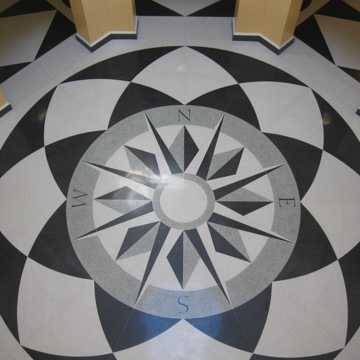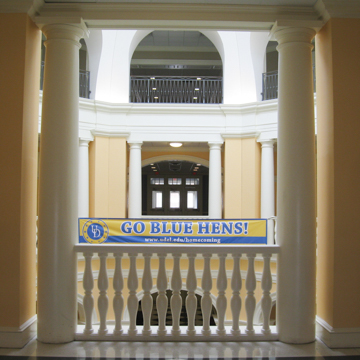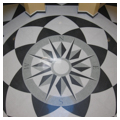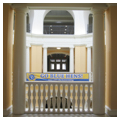This 65,000-square-foot classroom building and its gracious companion across the way, Du Pont Hall (1998–2003), are creations of Washington, D.C., architect Greenberg, a leading contemporary proponent of classical revival in the U.S. Gore Hall and Du Pont completed, at long last, Day and Klauder's plan for the Green; they make an interesting comparison to much older Wolf Hall (NK9.7), from which they borrow motifs and a distinctive “monk bond” brick-work (Flemish bond, except the stretchers are doubled, with a red mortar joint between). Expensive and massive, Gore indulges in a lavish use of materials, to a degree almost unheard of nowadays, including interior woodwork of mahogany, painted white, and extensive plasterwork in lieu of drywall. The octagonal atrium has a colorful terrazzo floor. Behind the building, an existing pedestrian overpass was given a Classical Revival dressing, its brick supports swelling in size far beyond structural necessity, to an enjoyable sculpturalism almost Baroque. On the main facade, Greenberg introduced a triumphal note to the Green with his overscale Doric columns of concrete, manufactured in Louisiana, that are thirty-one feet tall and weigh 24,000 pounds each. His showpiece buildings seek to prove that Classical Revival style can remain vital in the twenty-first century.
You are here
Gore Hall
If SAH Archipedia has been useful to you, please consider supporting it.
SAH Archipedia tells the story of the United States through its buildings, landscapes, and cities. This freely available resource empowers the public with authoritative knowledge that deepens their understanding and appreciation of the built environment. But the Society of Architectural Historians, which created SAH Archipedia with University of Virginia Press, needs your support to maintain the high-caliber research, writing, photography, cartography, editing, design, and programming that make SAH Archipedia a trusted online resource available to all who value the history of place, heritage tourism, and learning.







